Computers
Miss Formula
Miss Formula, who made her debut in 1964, was said to be "a computer's idea of how the perfect female should look." Though she was actually what the engineers at California Computer Products, Inc. thought the perfect female should look like. They designed her and the computer printed her out.California Computer Products (CalComp) was eventually acquired by the Lockheed Corporation. I wonder if Miss Formula still resides somewhere in their computer systems.
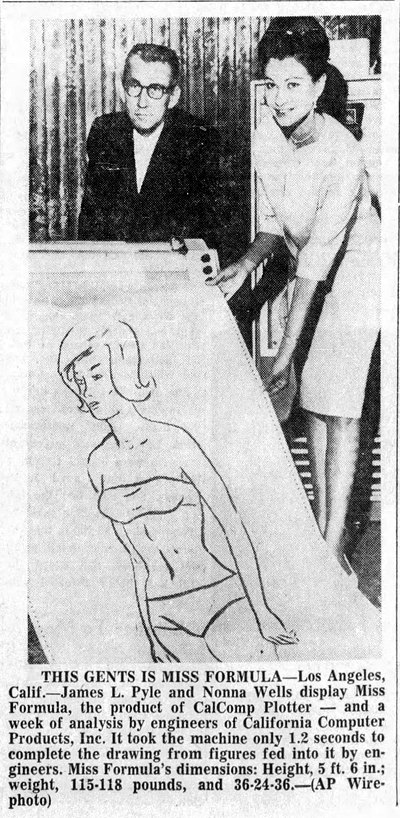
Tampa Tribune - July 31, 1964
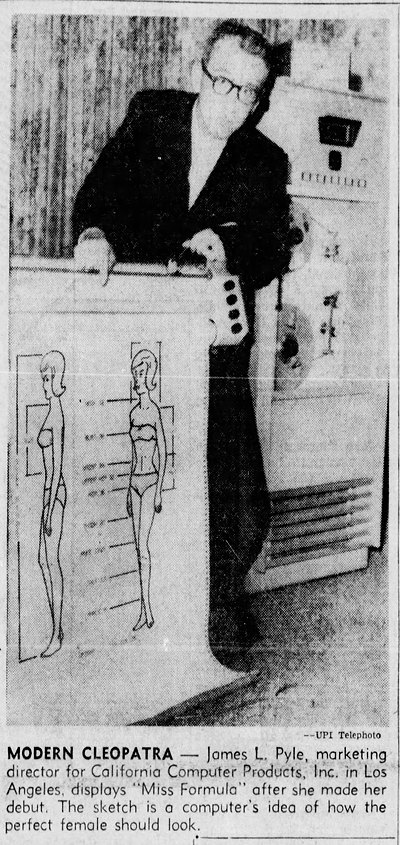
Pittsburgh Press - July 29, 1964

Pomona Progress-Bulletin - July 29, 1964
Posted By: Alex - Fri Nov 25, 2022 -
Comments (4)
Category: Awards, Prizes, Competitions and Contests, Technology, Computers, 1960s
EMAG-3
I did a science fair project in high school, but I put so little effort into it that I'm now embarrassed thinking back on it. The topic I chose was "The Electrolysis of Water." I basically just had some electrodes splitting water into hydrogen and oxygen.David Ecklein, however, had an extraordinary high school science fair project. Back in 1959, he built a computer, which he named EMAG-3, that was capable of playing "an interesting and reasonable game" of checkers. It was made from 3200 vacuum tubes and three miles of wiring. It stood 15 feet tall.
On his website, he notes that he designed it to fit the science fair floor space requirements, knowing that the regulations had omitted to mention anything about how high a project could be. Height restrictions were introduced the following year.
More info: MIT Museum
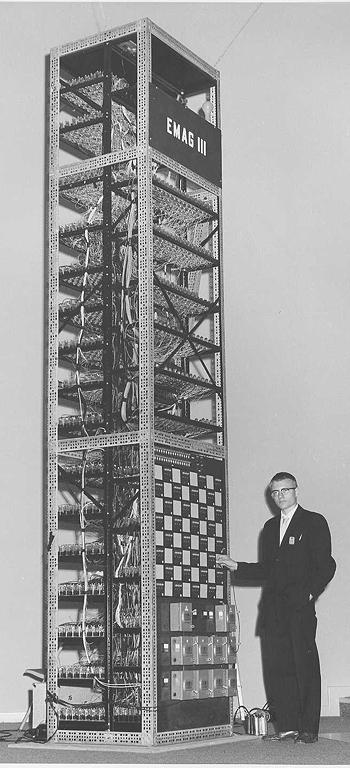
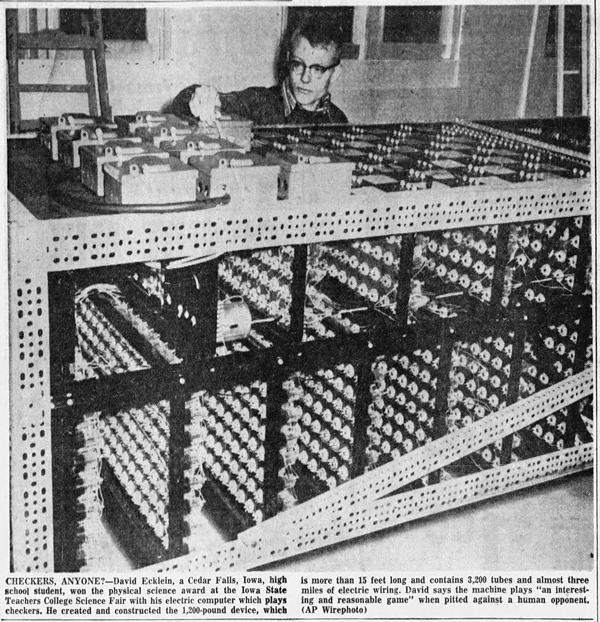
Great Falls Tribune - Apr 17, 1959
Posted By: Alex - Tue Sep 13, 2022 -
Comments (6)
Category: School, Technology, Computers, 1950s
International Society for the Abolition of Data-Processing Machines
The International Society for the Abolition of Data-Processing Machines (or ISADAPROM) was founded by Harvey Matusow in the late 1960s. Its aim was "to conduct guerrilla warfare against the computer by such means as sending a penny too much or too little when paying a utility bill."
San Francisco Examiner - Oct 27, 1968
Matusow also authored The Beast of Business, which was supposed to serve as a manual for the guerrilla warfare against the computer. I wonder if any of the techniques he detailed would still work today?

However, Matusow is best known for giving evidence in court against individuals during the McCarthy era. Later he claimed that the FBI had paid him to give false testimony, and he detailed these allegations in his book False Witness.
He seems to have had a rather eccentric life and career. Some other highlights of it, from the University of Sussex's page about him:
- Founded a band called the Harvey Matusow’s Jew’s Harp Band
- Married approximately twelve times
- Is possibly part of the reason The Beatles broke up – he held the party where John Lennon met Yoko Ono
- Worked as a children’s TV clown called Cockyboo in Tucson, Arizona
- Converted to Mormonism and spent his last years known as Job Matusow
Posted By: Alex - Sat May 29, 2021 -
Comments (7)
Category: Clubs, Fraternities and Other Self-selecting Organizations, Technology, Computers, 1960s
Butler In A Box
Before there was Alexa or Google Voice, there was the Butler In a Box. It was invented in the early 1980s by Gus Searcy, a professional magician, with help from Franz Kavan, a computer programmer. In response to voice commands it could control connected household devices. So, it could operate the lights, turn on the heat, make a phone call, etc.About 9000 of them were reportedly sold. But at around $1500, the gadget was too expensive. Plus, the voice recognition was somewhat buggy. By the early 1990s they were off the market, but there's still some of them for sale on eBay.
More info: Popular Science (Mar 1987), vcfed.org
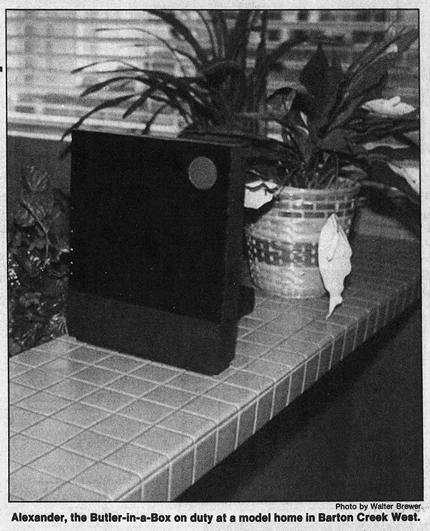
Austin American-Statesman - Aug 6, 1989
Posted By: Alex - Fri Jan 29, 2021 -
Comments (1)
Category: Technology, Computers, 1980s
Abacus vs. Calculator
Nov 1946: In a contest of old vs. new technology, the abacus beat a calculator in a contest of speed in all categories (addition, subtraction, and division) except multiplication.I'm assuming a modern computer should now be able to outperform an abacus, though I suppose it would depend on how quickly one can input the numbers.
More info: Abacus vs. the Electric Calculator
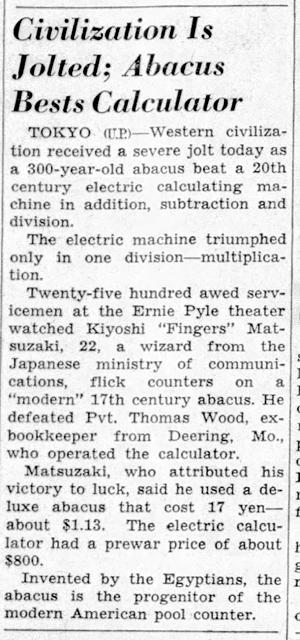
The Californian - Nov 11, 1946

Detroit Free Press - Nov 4, 1946
Posted By: Alex - Wed Dec 02, 2020 -
Comments (5)
Category: Technology, Computers, 1940s
Keyboard Jeans
A product concept from Dutch design company Nieuwe Heren. The wireless, flexible keyboard sewn into the jeans was fully functional. However, the jeans could not be machine washed.As far as I know, these remained a concept and never made it to market. But the company said that, if they were ever to sell these jeans, they'd price them at around £250 ($325).

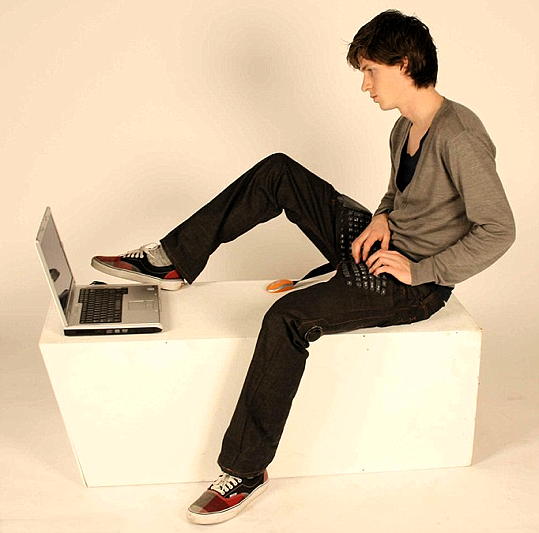
Posted By: Alex - Sat May 23, 2020 -
Comments (7)
Category: Computers, Denim
Playskool Play ‘n’ Learn Computer
Same hardware that took Apollo to the moon!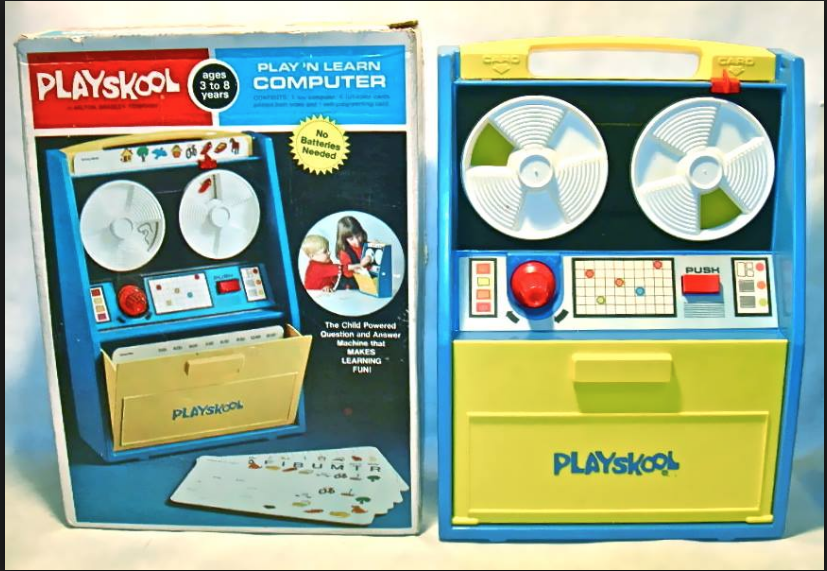
Posted By: Paul - Sat Jun 01, 2019 -
Comments (0)
Category: Toys, Computers, 1970s
How to become a computer programmer—in 1969
The ad below ran in Esquire (and many other publications) in 1969. The pitch seems reasonable enough until you consider that home computers weren't introduced until the late 1970s. So how were people going to learn programming without a computer to practice on? According to the ad copy, students were expected to "train by mail."I wonder if anyone ever actually learned programming in this way?
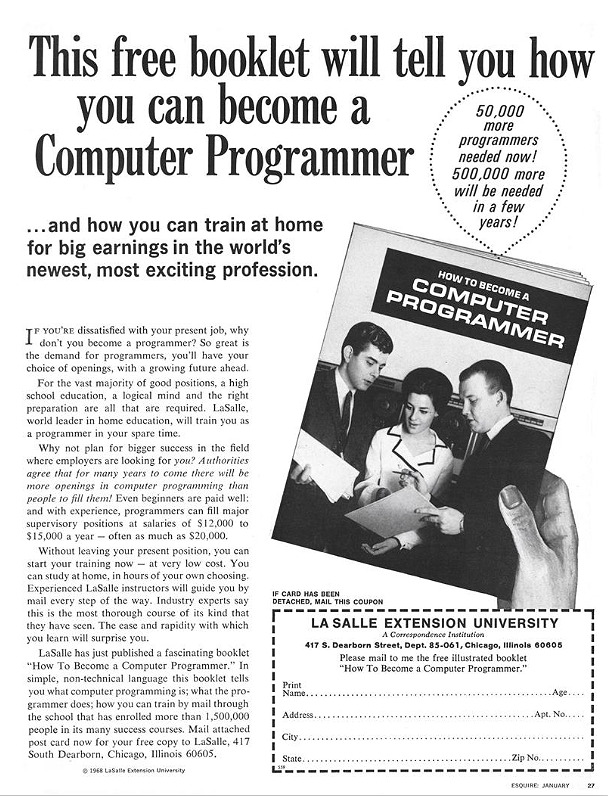
Esquire - Jan 1969
Posted By: Alex - Thu May 30, 2019 -
Comments (9)
Category: Advertising, Computers, 1960s
“It will never become obsolete”
Atari ad from 1980.Technology companies should probably never claim that their products will never become obsolete.

via Book of Joe
Posted By: Alex - Wed May 01, 2019 -
Comments (1)
Category: Technology, Computers, Advertising, 1980s
Universal Everything
These CGI guys make some pretty weird videos.Superconsumers 1 from Universal Everything on Vimeo.
Emergence VR - Sundance trailer from Universal Everything on Vimeo.
Posted By: Paul - Wed Mar 06, 2019 -
Comments (0)
Category: Art, Surrealism, Computers, Special Effects

| Who We Are |
|---|
| Alex Boese Alex is the creator and curator of the Museum of Hoaxes. He's also the author of various weird, non-fiction, science-themed books such as Elephants on Acid and Psychedelic Apes. Paul Di Filippo Paul has been paid to put weird ideas into fictional form for over thirty years, in his career as a noted science fiction writer. He has recently begun blogging on many curious topics with three fellow writers at The Inferior 4+1. Contact Us |




